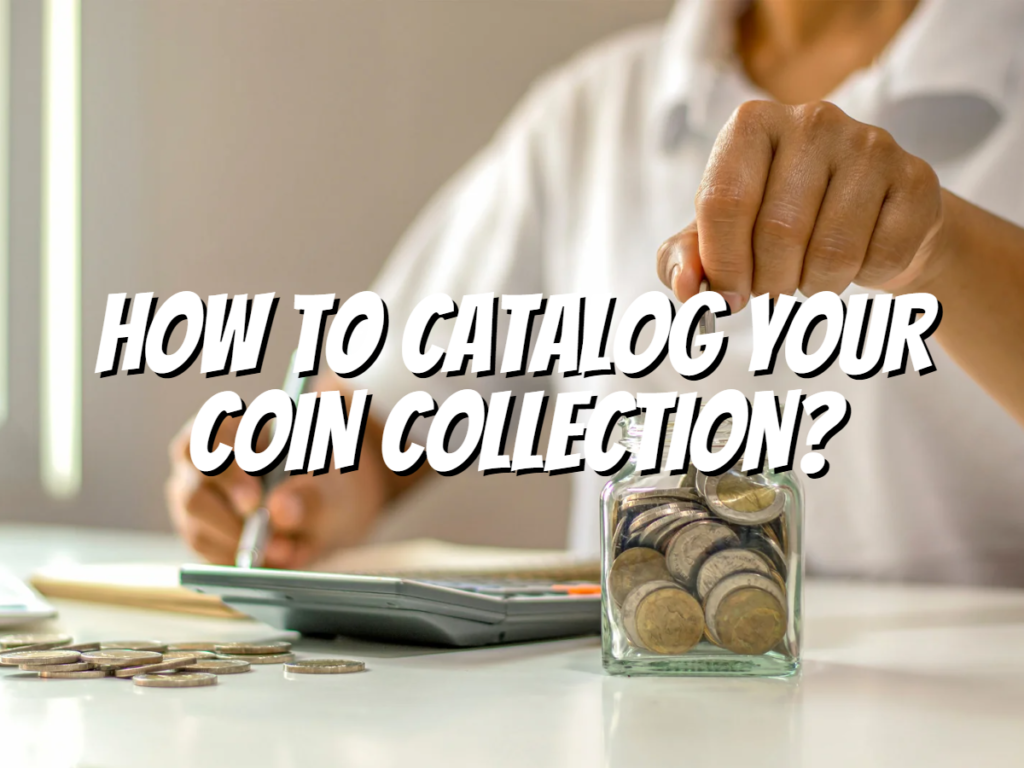How to catalog your coin collection? Experts in coin collections are aware that correctly categorizing each coin they possess is a crucial component of keeping their coins safe and secure.
To sell your rare coins and maintain records of what you own, organizing also involves writing down crucial details about the collection.
Here is further information on the usefulness of cataloging coins and suggestions for developing your system.
How To Catalog Your Coin Collection?
There are several ways to catalog a coin collection. Here are some ways to catalog your coin collection:
Documentation

A small coin collection can be organized efficiently in a straightforward spiral or three-ring notebook.
You may create sections to enter the data you need to track using a ruler and a pen. However, you can be as inventive as you like and track as much data as possible.
You can arrange it by country, denomination, selling price, variety, year, or mint mark. It’s all up to you!
Checklist

Utilizing a coin checklist is another way to organize your collection while planning the next coins you want to buy.
Checklists are arranged by kind, denomination, year, and mint mark for each series of US coins, as opposed to a notepad, which is freeform and offers no background information.
Spreadsheet

You can use a computer and a basic spreadsheet tool, like Microsoft Excel, to keep track of all your purchases and sells and your coin collection.
This makes it simple to add and remove lines, organize your collection, and instantly determine your collection’s overall worth.
Additionally, you may likely track extra data that other people might not find interesting.
Software

The finest and fourth alternative is to invest in software designed specifically for coin collectors.
Today’s industry offers a wide variety of coin cataloging software alternatives.
Free, extremely cheap ($20–$30), and slightly more expensive options can all be found.
What to look for in coin cataloging software:
- simplicity of use
- planned interfaces
- flexibility in organizing your collections
- ability to obtain up-to-date pricing data
- capacity to automatically revalue your coin collection at market rates.
The final and most crucial feature is a completely functional free trial or a money-back guarantee if you are unsatisfied with your purchase.
Benefits Of A Coin Collection Catalog
A coin collection catalog is an excellent tool for helping to keep track of your collection.
It can also provide you with information regarding the coins in your collection. This catalog will help you know what coins you have and how valuable they are, making it easier to find any specific ones you want.
When investing in rare coins, an investment portfolio must have a detailed record of all its holdings so that each piece can be properly documented and easily accessed if needed.
If your heirs decide they do not want to preserve your coin collection for themselves, selling it will be simpler if it is well cataloged.
Alternatively, you can designate which coins go to which heirs of your estate using the catalog of your coin collection.
This method can help you distribute your estate with fewer difficulties and disputes.
Takeaway:

The first step to cataloging your coin collection is to organize your coin collection using year, mint mark, country, denomination, etc.
Next, list the denomination and weight in ounces for each coin in your collection.
This will help ensure that everything is correct when adding up values when selling or trading coins.
You could also include other information about each coin, such as its original price at purchase or historical significance, if it helps jog your memory about when you obtained one particular item versus another from a different period altogether!
Finally, use binder clips (or other methods), so all this information stays organized while looking professional enough on its merit.”
Before you go…
You can see that there is a lot to learn about cataloging your coins. Finding the right approach for yourself is more important than anything else. If you are new to coin collecting, check out these articles to help you in your coin collecting journey!
Check out my next article: “How To Organize Coin Collection For Appraisal?“
Related Articles:

